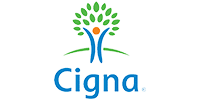Swiping Left For Partners And Paraphernalia
“Swiping right” on modern dating apps can bring users one step closer to matching with a potential partner, but drug dealers in Florida are abusing this opportunity to sell their wares. Detectives with the Polk County Sheriff Office alleged that 52 people used the LGBTQ dating apps Grindr, Scruff, and Taimi to sell Methamphetamines, Cocaine, Fentanyl, Marijuana, and other drugs.
Detectives created undercover profiles and were able to buy nearly a pound and a half of Marijuana, one of the most commonly sold drugs, and 280 grams of Meth through online sales. This operation, dubbed “Swipe Left for Meth,” illustrated how individuals explicitly promoted drugs on their dating profiles. Potential buyers only had to swipe left on a photo to express their interest or send a direct message, with little to no moderation from the platform.
Grindr, self-described as the world’s largest social networking app for the LGBTQ community, saw more sales than the other 2 investigated apps. Grindr, Scruff, and Taimi strictly prohibit the selling and promoting of drug use, but users have previously accused Grindr of not doing enough to police illegal drug sales. Users across all platforms are encouraged to report suspicious and threatening activities, but many profiles slip through the radar.
Secret Language On Dating Apps
Individuals selling or looking to buy drugs on dating apps and social media discreetly use emojis and code words to conceal their sales and inquiries. Usually, app algorithms will flag or delete the content that explicitly discusses drug use before users see it. A typical loophole to avoid detection is to use emojis or code words. Common emojis used include snowflakes or snow for Cocaine, diamonds for Crystal Meth, and an electrical plug for a drug dealer or “plug.” These emojis signify the amount of the drug, the type, the strength, and the purity. Recognizing the double-meaning of emojis is imperative to monitoring and identifying potential drug sales.
However, using emojis is not the only way drug dealers and buyers identify their interests. Individuals can just look for a capital “T.” Profiles that include what seems to be randomly capitalized Ts or acronyms in the title or bio are signaling that they are looking for or selling “Tina” – Meth’s street name. This capitalization also appears in terms like “parTy and play” or “PNP,” which describes a term used by some gay men to describe a sexual encounter while under the influence of drugs. Some Grindr users even report receiving messages “nearly every day” from someone asking them to participate in “PNP.”
Dangers Of Buying Drugs Online
Fake prescription pills, commonly laced with Fentanyl and Methamphetamine, are sold across most social media platforms, making them attainable to anyone with a smartphone or internet. This accessibility of illegal substances is alarming on multiple fronts, but of most concern is the risk of lethal overdose due to laced or counterfeit drugs. According to the US Drug Enforcement Administration (DEA), for every 5 pills the DEA seized in 2021, 2 out of the 5 pills contained a lethal amount of Fentanyl which is 50 to 100 times more potent than Morphine. Often, individuals purchasing drugs online or in-person trust the dealer and the product at face value, but many dealers cut their product with other substances like Fentanyl. Being able to purchase drugs through apps only expedites this risk of exposure and increases the reach of drug distribution.
Since teens and young adults are the most prevalent demographic amongst social media platforms, parental figures can help guide and monitor online activities for younger children and teens. Behavioral signs that may signify an individual is purchasing illicit drugs online include:
- Displaying secretive behavior when online such as switching between web pages or quickly exiting a page when someone walks into the room.
- Lying or deceitful behavior.
- Increase in spending money or missing money.
- Increase in received packages.
- Spending more time alone in their room or locking the door.
- Changes in behavior or changes in sleep habits.
Apps And Drug Distribution
Dating platforms are not the only apps experiencing high rates of drug distribution; Snapchat and Instagram are facing growing concerns with drug dealing. The nature of social media and its algorithms is to push content that they believe an individual wants based on their activity on the platform. For example, if individuals are actively searching for a particular drug through hashtags, they are likely to connect with a dealer or someone affiliated. Once a point of contact is made, it only takes a couple direct messages to make a sale. Additionally, the disappearing chat and photo feature on Snapchat can make some drug deals nearly untraceable. These innovative features like hashtags, trending pages, “Quick Add” contacts, and disappearing direct messages can build a hidden web of drug distribution that police officials have difficultly tracking.
Will Your Insurance Cover Rehab?




Cracking Down On Online Drug Dealing
In a 2016 study of gay dating apps, LGBTQ blog WEHOville reported that only Grindr “allowed its users to openly include emojis and text in their profiles that indicated they were drug users or sellers.” One month after the report, the app censored a few well-known drug emojis and words, but the app’s drug market is still present today. A Grindr spokesperson states that the app “prohibits the promotion of drug use in its user-profiles and is committed to creating a safe environment through digital and human screening tools to help its users connect and thrive.” The common thread throughout most social media apps is that they rely on their users to report inappropriate content, but police departments across the country are aiming to investigate more cases of drug selling and promotion on apps and other social media platforms.
The post Drug Dealers Use Dating Apps To Pedal Drugs appeared first on Addiction Center.
